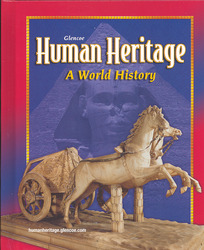
Human Heritage: A World HistoryChapter 33: Rise of IndustryRise of IndustryBy the 1700s, people in the western world not only had new ideas about government but also new ideas about science. These new ideas led to the development of new forms of power and new ways of making goods. Chapter 33 focuses on the changes in science, industry, and ways of living that are known as the Industrial Revolution. Section 1 describes the inventions and discoveries that marked the Scientific Revolution that began in the 1400s. A chart lists important scientists and their accomplishments in the fields of astronomy, medicine, physics, chemistry, biology, and botany. Section 2 covers the developments that took place in farming, called the Agricultural Revolution, and how these changes contributed to the Industrial Revolution. Section 3 discusses how the Industrial Revolution developed, beginning in the textile industry of Great Britain. It describes the many inventions that allowed workers to produce more of many kinds of goods in less time. The concepts of interchangeable parts and automation are explained. Developments in the production of building materials and improvements in transportation are also discussed. Section 4 focuses on the impact that the Industrial Revolution had on people's lives in Great Britain and elsewhere. The section explains the problems associated with the growth of cities and describes the social reforms that helped ease those problems. Section 5 explains how the Industrial Revolution spread from Great Britain to Belgium, France, the United States, and Germany, and how these countries industrialized, helped by the development of electricity and the internal combustion engine. |  |















